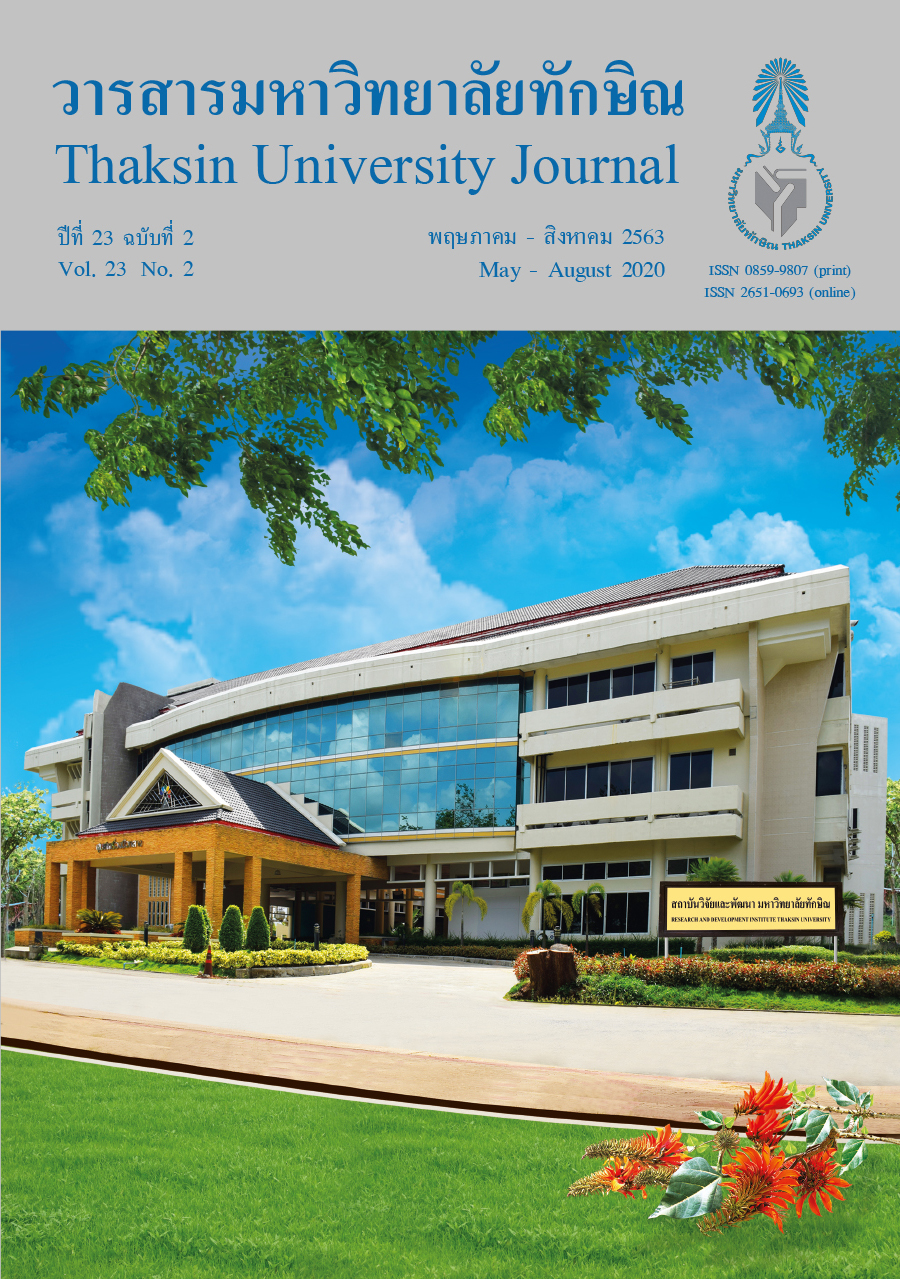Effect of 7,8-dihydro-8α-20-hydroxyecdysone on Photosynthesis, Chlorophyll Content and Chloroplast Structure in Tomato (Solanum lycopersicum cv. “CH154”) under Drought Stress
Main Article Content
Abstract
This research aimed to investigate the role of 7,8-Dihydro-8α-20-Hydroxyecdysone (DHECD) on drought tolerant ability, photosynthesis, chlorophyll content and chloroplast structure under drought by using Polyethylene Glycol 6000 (PEG) in tomato. The experiment 1 studied drought tolerant ability in tomato and measured shoot length, root length, Relative Water Content (RWC), chlorophyll and carotenoids contents. There were 4 treatments: 0, 0.25, 0.5, and 1 % (w/v) PEG whereas the experiment 2 determined the effect of DHECD on chlorophyll a/b ratio, performance index (PI), chlorophyll fluorescence (Fv/Fm), SPAD values and chloroplast ultrastructure in tomato under drought. There were 3 treatments: 1) control plants (0 %(w/v) PEG) and sprayed with 0 μM DHECD, 2) drought treated plants (0.5 % (w/v) PEG) and sprayed with 0 μM DHECD, and 3) drought treated plants (0.5 %(w/v) PEG) and sprayed with 50 μM DHECD. Experiment 1 results showed that shoot and root lengths, RWC, chlorophyll a, and chlorophyll b contents of drought treated plants (0.5 %(w/v) PEG) were decreased by 33.93 %, 60.57 %, 34.22 %, 12.47 % and 35.68 %, respectively when compared with control while carotenoids content increased by 47.20% when compared with control. Experiment 2 results showed that after 12 days of drought treatment, DHECD maintained chloroplast structure in leaves and increased chlorophyll a/b ratio, PI, Fv/Fm and SPAD values by 6.51 %, 21.22 %, 0.72 % and 25.43 %, respectively when compared with drought. These results indicated that DHECD application improves photosynthetic efficiency and maintains chlorophyll content and chloroplast structure in tomato under drought.
Article Details

This work is licensed under a Creative Commons Attribution-NonCommercial-NoDerivatives 4.0 International License.
References
Ogweno, J. O., Song, X. S., Shi, K., Hu, W. H., Mao, W. H., Zhou, Y. H., Yu, J. Q., & Nogués, S.(2008). Brassinosteroids alleviate heat-induced inhibition of photosynthesis by increasing carboxylation efficiency and enhancing antioxidant systems in Lycopersicon esculentum. Journal of Plant Growth Regulation, 27(1), 49–57.
Sonjaroon, W., Kaveeta, L., Chai-arree, W., Klinsakorn, S., Suksamrarn, A., & Jutamanee, K.(2016). Exogenous 7,8-dihydro-8α-hydroxyecdysone application improves antioxidative enzyme system, photosynthesis, and yield in rice under high-temperature condition. Acta Physiologiae Plantarum, 38(8), 1–11. DOI: https://doi.org/110.007/s11738-016-2205-8.
Wellburn, A. R. (1994). The spectral determination of chlorophylls a and b, as well as total carotenoids, using various solvents with spectrophotometers of different resolution. Journal Plant Physiology, 144(3), 307–313.
Siahsar, B. A., Ganjali, S., & Allahdoo, M. (2010). Evaluation of drought tolerance indices and their relationship with grain yield of lentil lines in drought-stressed and irrigated environments. Australian Journal of Basic and Applied Sciences, 4(9), 4336–4346.
Ceusters, N., Valcke, R., Frans, M., Claes, J. E., den Ende, W. V., & Ceusters, J. (2019). Performance index and PSII connectivity under drought and contrasting light regimes in the CAM orchid Phalaenopsis. Frontiers in Plant Science, 10, 1–15. www.frontiersin.org.
Thussagunpanit, J., Jutamanee, K., Kaveeta, L., Chai-arree, W., Pankean, P., Homvisasevongsa,S., & Suksamrarn, A. (2015). Comparative effects of brassinosteroid and brassinosteroid mimic on improving photosynthesis, lipid peroxidation, and rice seed set under heat stress. Journal of Plant Growth Regulation, 34(2), 320–331.
Maneechote, P., Ke, X., Thongsomnuek, P., Keawlaong, S., Hngokchai, C., Suksamrarn, A.,Chaivisuthangkura, P., & Saeng-ngam, S. (2018). Effect of brassinosteroid mimic on chlorophyll content and lipid peroxidation of tomato (Solanum lycopersicum) grown under drought stress. Khon Kaen Agriculture Journal, 46(Supplement 1), 322–327.


